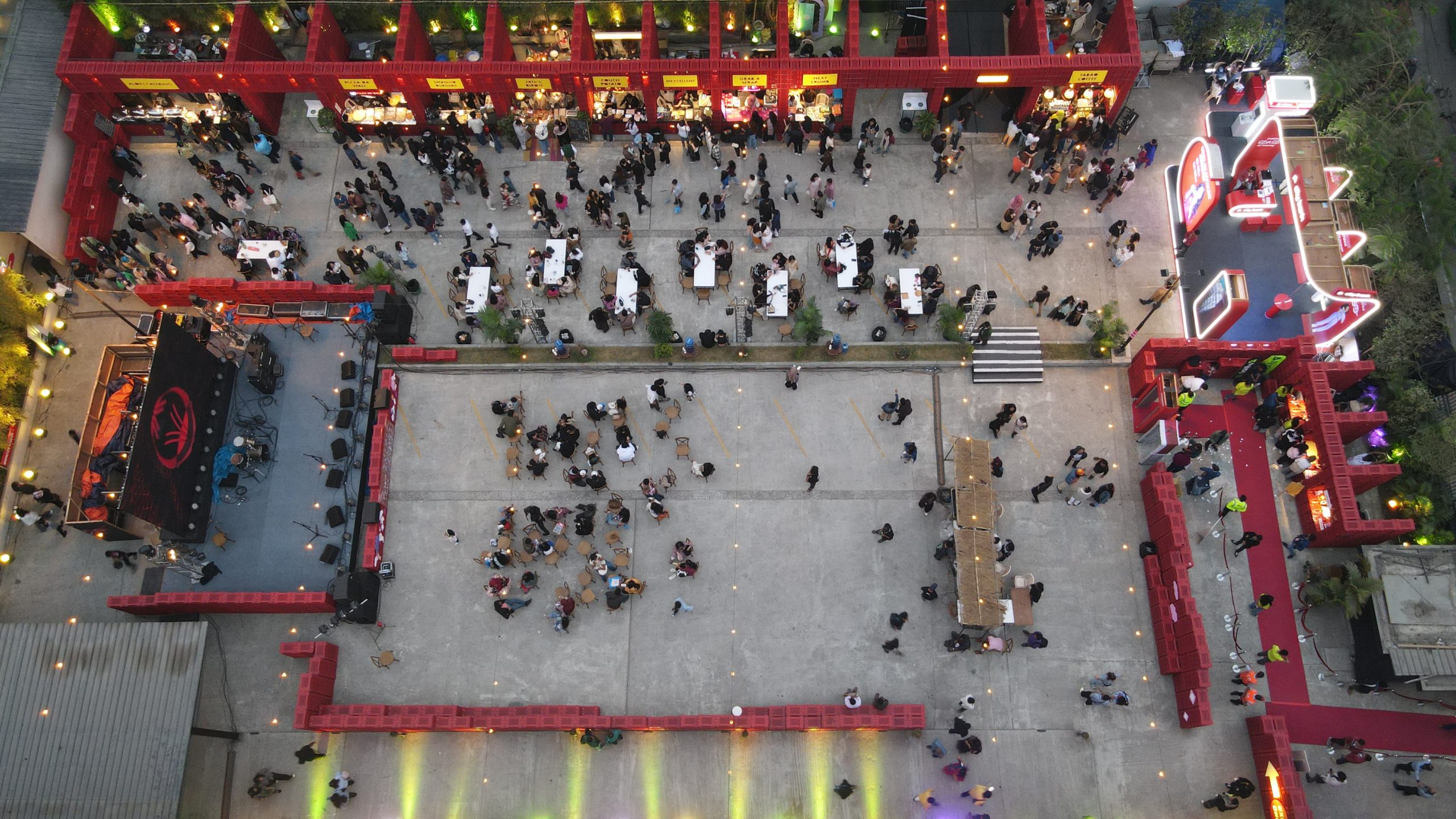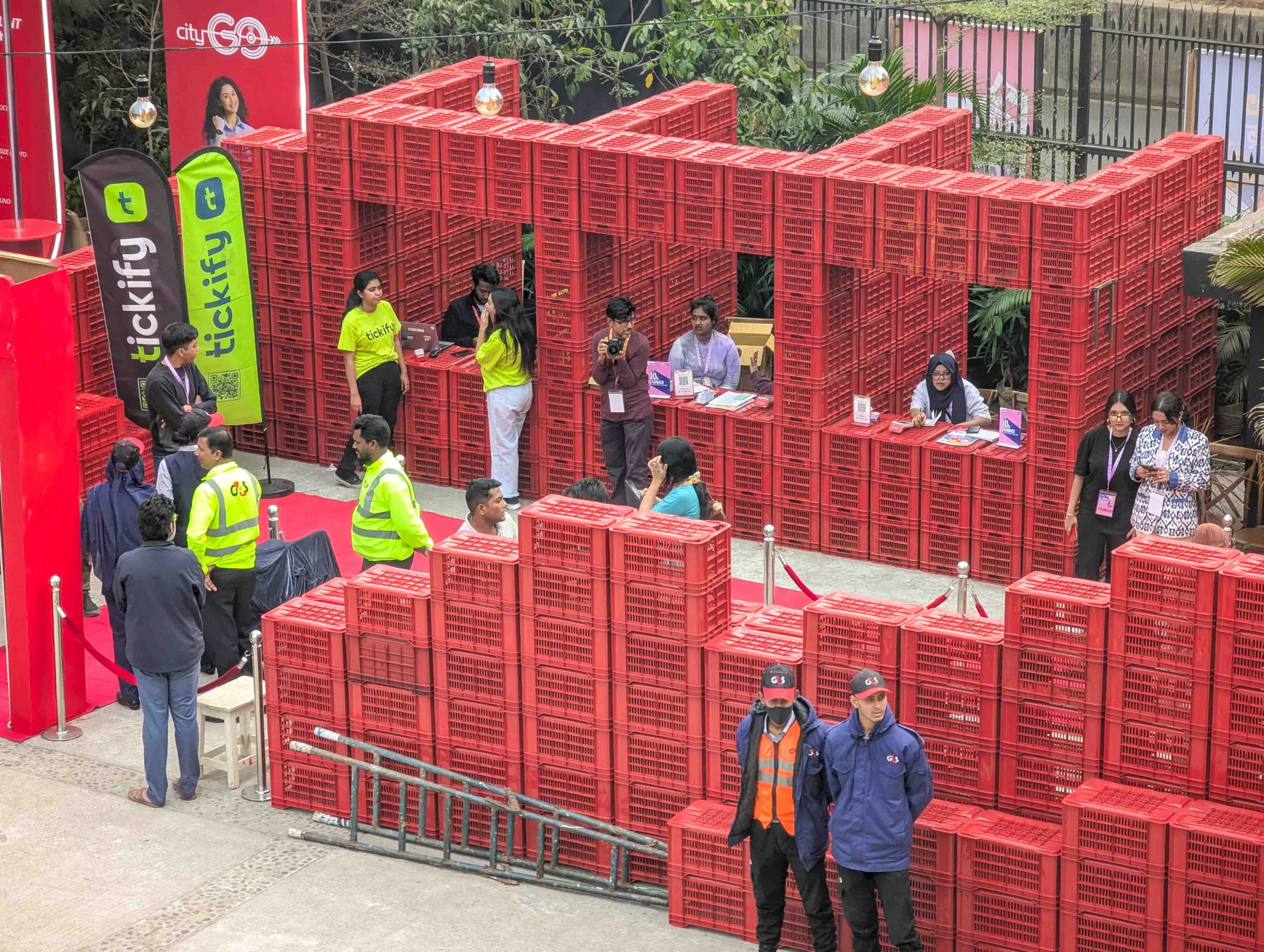
How the Paraa team turned some crates into conversation pieces while designing the space for Dhaka Makers 3
Kazi Arefin is the Co-founder & Director of Paraa, a research-based design and architecture studio, focusing on enhancing lives and spaces with the communities in Bangladesh and beyond through multi-disciplinary practice. “My journey as a designer in Dhaka, a city of immense challenges and opportunities, quickly evolved beyond traditional architectural training” he tells ICE Today, adding ” Practising here revealed that conventional approaches were insufficient given our urban informality, climate change impacts, and socio-economic disparities. I realised design had to be a tool for systemic change, not just aesthetics.”
When the Paraa team landed the project of designing the space for Dhaka Makers 3, these design principles were put to work.
“For us, building in a sustainable way is always a foundational mindset, drawing lessons from the historically sustainable and environmentally friendly built environment of our rural areas, a wisdom that urban development has often forgotten. Temporary spaces, unlike conventional permanent projects, offer an invaluable arena to experiment with ideas and demonstrate processes, allowing for agility in addressing land use, functionality, and durability.”
A critical concern was the prevalent waste and use of toxic materials like particle board and harmful paints in traditional temporary event setups here. The team was absolutely committed to avoiding that. They needed a method that allowed for super-fast construction, and, importantly, had to be fun in the process. When Aloki’s Fahd Sattar proposed the idea of using modular food, such as crates, it immediately resonated with these objectives. It was a perfect fit for a low-risk, high-impact urban experiment.
The final design is credited to Kazi Arefin and Abdul Kadir of Paraa; Fahd Sattar with installation support from Noyon and his team, with additional support from Rabindranath Sarker and Bhaskar Chowdhury. Initially calculating for about 4,500 crates, the team ultimately sourced 3,000.
The fundamental of this approach lies in its circularity. Aloki essentially entered into a material lease agreement, sourcing the crates from a supplier in Kawran Bazar, and returning 100% of them afterwards for an 80% refund. This 20% effectively covered transportation and logistics: a few days of these crates’ typical life cycle was utilised without harming anyone or creating waste. This isn’t just sustainable; it’s an economically astute model for temporary structures.
“While we initially hoped for white crates, settling for red due to availability proved to be a happy accident. The vibrant red, with its association with food, created a striking visual identity for the food court, turning a practical limitation into a powerful design feature.”
 A model for the modular approach
A model for the modular approach
The question Arefin grapples with is the use of plastic. “My philosophy is not to encourage more plastic production, but rather to advocate for the intensified reuse of particular categories of plastic – especially those already in circulation or made from recycled content.” Once plastic is extracted through the oil refining process and becomes a resin, it’s already a part of our environment. Reusing it reduces its overall environmental footprint and prevents it from heading to a landfill; instead, it remains in a productive loop, gaining multiple lives. To acknowledge this reality allows designers to consciously “hack” ways to benefit from and perpetuate this reuse.
When comparing the environmental impact, it’s essential to consider the energy and environmental footprint of alternatives for temporary setups. Materials like particle boards, chemical paints, or even the high embodied energy of concrete and fired clay bricks, all carry significant negative environmental issues. For a temporary event like Dhaka Makers 3, where rapid assembly, disassembly, and complete reusability are paramount, these red crates offered a significantly lower overall environmental impact when managed within a circular system. That the design team achieved 100% reusability and effectively leased the material for its temporary use case is a testament to this approach. This scalable model proved an attractive option for other festivals, pop-up markets, or even disaster relief structures, offering a blueprint for resource-efficient and rapidly deployable solutions. The primary challenges in scaling would involve ensuring consistent large-scale supply and overcoming public perception about plastic, but the environmental and economic benefits are compelling enough to warrant widespread adoption.
Sparking conversations
“While material choices are fundamental, eco-friendly design, for me, encompasses a far broader philosophy – it’s about fostering a deeper understanding of resources, consumption, and their societal impacts. It aims to spark curiosity and prompt a re-evaluation of what we consider ‘waste’ or ‘valuable’.”
The team’s red crate experiment certainly paid off. People were curious about the material, its origin, and assembly. This kind of interaction, where design choices provoke a dialogue about resourcefulness and the hidden value in everyday items, is a powerful, understated way to influence eco-consciousness. It demonstrates that sustainability isn’t solely about high-tech solutions but about ingenious, local interventions and a fundamental shift in our relationship with materials and consumption, actively promoting a circular economy in practice.

 A model for the modular approach
A model for the modular approach